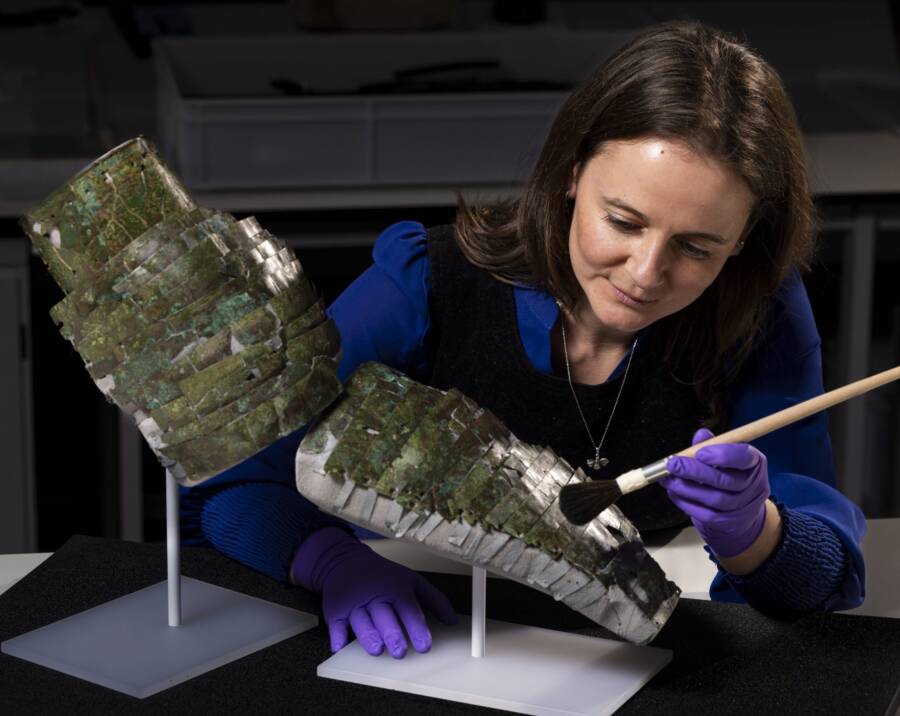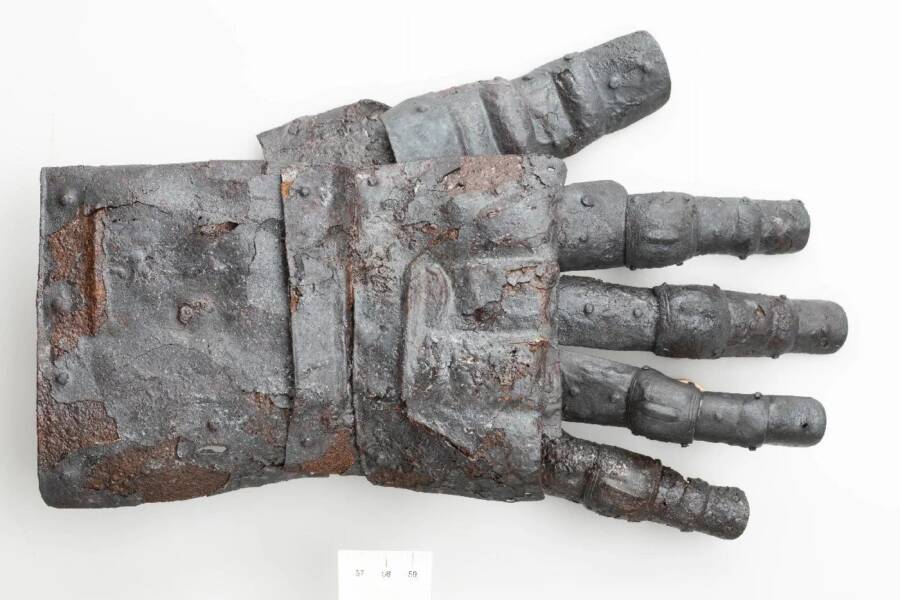Ancient Roman arm guard rebuilt in Scotland, Stone Age "chewing gum" found in Sweden, medieval gauntlet unearthed in Switzerland.
Experts Rebuild The World’s Only Intact Roman Arm Guard From More Than 100 Tiny Pieces

Duncan McGlynnThough such pieces of armor were usually made of iron, this “statement piece” was made of “glamorous brass fixings” that “would have looked absolutely spectacular,” suggesting its wearer was a high-ranking centurion.
Archaeologists in Scotland just rebuilt an 1,800-year-old Roman arm guard that was discovered among the ruins of an ancient fort in 1906. Found in more than 100 tiny pieces, this “ancient jigsaw puzzle” took experts three weeks to painstakingly reconstruct, and now it’s the only intact Roman arm guard in the world.
“The transformation is striking,” said National Museums Scotland curator Fraser Hunter. “Now that it’s been reconstructed, you can picture the legionary who once wore it.”
Learn more about this stunning artifact here.
10,000-Year-Old “Chewing Gum” Sheds Fascinating Light On The Diet Of Stone Age Teens

Verner AlexandersenCasts of the 10,000-year-old “chewing gum” found in Sweden.
Ten thousand years ago, a group of Stone Age adolescents in Sweden chomped down on a tar-like black resin made of birch bark. Much like modern day teenagers, they spat the “chewing gum” out when they were done with it, oblivious to the fact that researchers far in the future would use the glob of sticky resin to better understand their diet and oral health.
Dig deeper in this report.
“Sensational” 14th-Century Gauntlet Discovered In Switzerland

Canton of ZurichArchaeologists found a rare intact medieval gauntlet for the right hand.
Hundreds of years ago, someone in Switzerland threw down their gauntlet. Now, archaeologists excavating a site near Kyburg Castle in Pfäffikon, Switzerland have found it — in surprisingly good condition.
The gauntlet, meant for the right hand and wrist, is about 14 inches long. It’s made of individual iron plates that lay atop each other like scales and are held together with side rivets. Hundreds of years ago, the gauntlet would have been affixed to some kind of pliable material like leather. Whoever wore it would have had the flexibility to make a fist or hold a sword.
Read on here.





